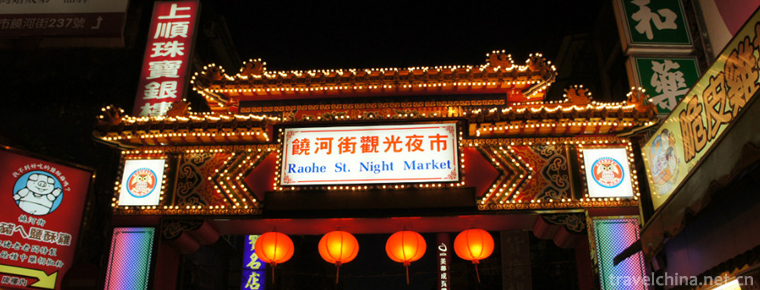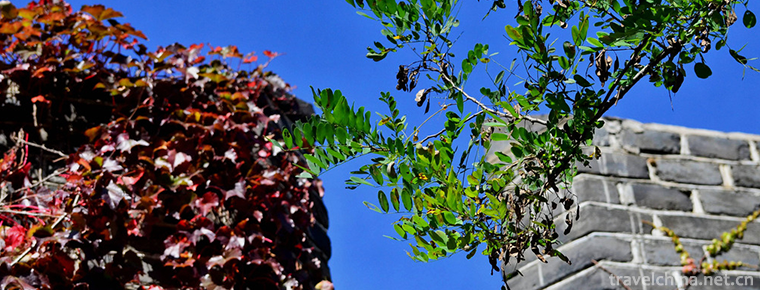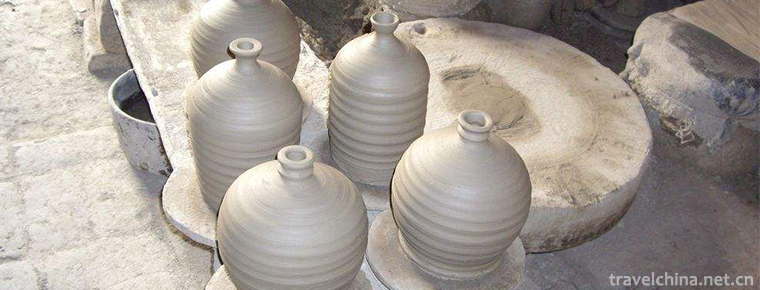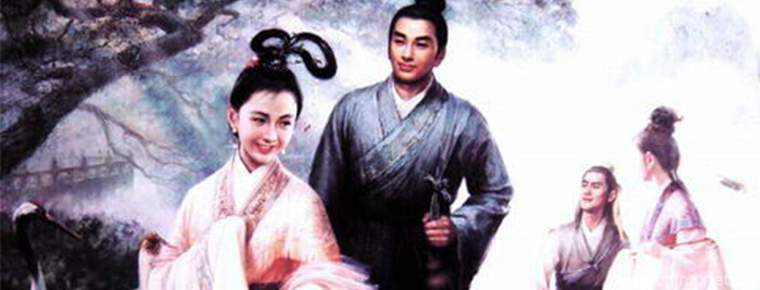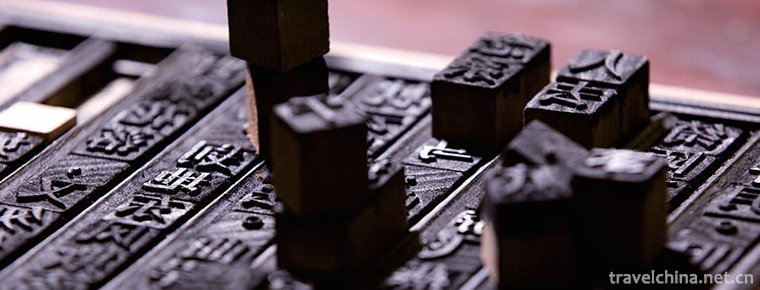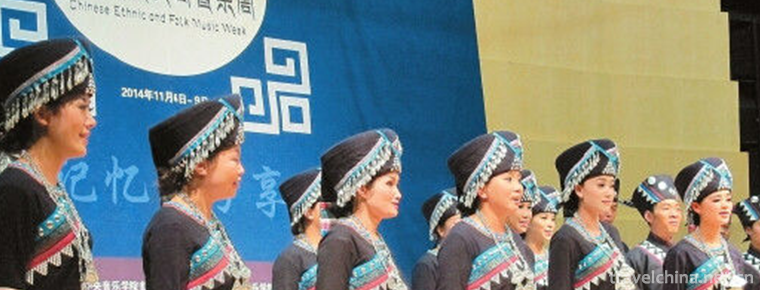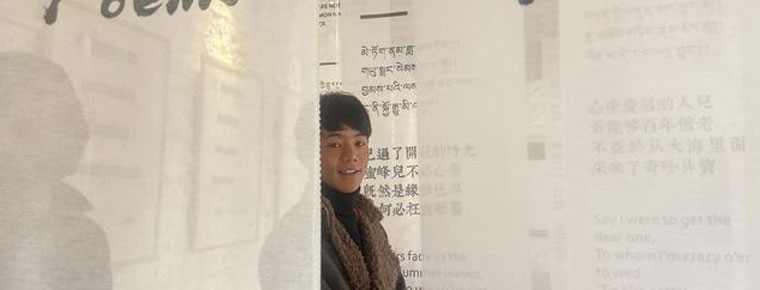Xingyiquan
Xingyiquan
Xingyiquan, also known as Xingyiquan, is one of the traditional Chinese boxing. Although there are different opinions on its origin, Ji Jike (1602-1680), a native of Puzhou, Shanxi Province, was widely recognized as the first founder in the late Ming and early Qing Dynasties. At the beginning of its establishment, Xingyi Quan was called Xinyi Liuhe Quan, namely Xinyi, Yiyi and Qi, Qi and Li, Shoulder and Crotch, Elbow and Knee, Hand and Foot. The current popular Xingyiquan was founded by Li Luo, a native of Shenzhou, Hebei Province, on the basis of Xinyiquan in the Daoguang Period. Xingyiquan emphasizes the high unity of internal meaning and external appearance. Later Zun Li Luo can be the ancestor of Xingyi Quan.
Li Luoneng's Shape-Yiquan consists of three-body pile-gong, five-element and twelve-shaped boxing. Trisomy is the unique basic skill and internal skill training method of Xingyiquan, which is known as "all kinds of methods originate from trisomy". Five-element boxing combines the five elements of gold, wood, water, fire and earth, which are split boxing (gold), drill boxing (water), collapse boxing (wood), artillery boxing (fire) and horizontal boxing (earth); twelve-element boxing is a practical combat technique created by imitating the action characteristics of twelve kinds of animals, namely, dragon-shaped, tiger-shaped, bear-shaped, snake-shaped, cockle-shaped, monkey-shaped. Horse-shaped, chicken-shaped, swallow-shaped, kite-shaped, eagle-shaped .
On May 23, 2011, Xingyiquan was approved by the State Council to be included in the third batch of national intangible cultural heritage list .
Legend of Origin
There are different opinions on the origin and origin of Xingyi Quan. There are no conclusive historical data to support it. There are three main statements:
Origin 1: Legend was created by the ancestor of Damo. He came to China to teach Buddhist sutras. He was transformed into a Buddhist monk at Shaolin Temple in Songshan Mountain for nine years. Later, many skilled monks appeared in the temple. Later, because of his admiration for his name, later generations recognized Damo as the ancestor of Xingyiquan. Another poet wrote Yongdamo I in memory of the spirit of Damo's sutras biography. Poetry, the poem wrote: "Damoses came without a word, wholeheartedly practicing kungfu, to seek Buddhist Dharma from paper, the tip of the pen dipped in Dongting Lake." Because Xingyiquan was originally named Xinyiquan, it is a misunderstanding of later generations to regard Damo as the ancestor of Xingyiquan .
Origin 2: Saying Xingyiquan was created by Yue Fei. In the preface to a famous ancient boxing score, he wrote: "When Wumu was a boy, he was a famous teacher, proficient in gun technique, took off his gun and took off his fist. He taught his generals and assistants, famous Japanese (Italian) boxing. It was magical and unpredictable. He had no skills in ancient times. In the Jin, Yuan and Ming dynasties after the king, there were few skills. Jigong was the only one with good fame and rich character (Huang Xinmin's "Preliminary Study of Jijikee's Life" textual research is "Longfeng". Born in late Ming and early Qing Dynasty (according to Huang Xinmin's textual research, Ji Jike was born in Wanli year of Ming Dynasty and died in Kangxi year of Qing Dynasty). He was the Feng family of Pudong (now Yongji County, Shanxi Province). He visited the famous teacher in Zhongnanshan, met with strangers, got the score of King Yuewumu Quan, practiced for several years, realized its mystery, and then taught Mr. Cao Jiwu in Qiupu.( Nobody knows his bravery in Anhui Province today. Mr. Wu has been studying for twelve years and has achieved great success in skill. The preface of this section is written in the fifteenth year of Emperor Qianlong's reign in the Qing Dynasty, the Dutch Moon at Gengwu. Dai Longbang prefaced it to the Ma Xueli Bookstore in Luoyang, Henan Province. From the preface mentioned above and the oral instruction from the teacher, it is said that Xingyi Quan was created by Yue Fei. But in 1982, Huang Xinmin made a special trip from Anhui to Zuncun, Yongji County, Shanxi Province, to study the origin of Xingyi Quan. In his book "Textual Research on the Origin of Xingyi Quan", he analyzed: "From the historical records, there is no record of Yue Fei's boxing." And from the analysis of Yue Fei's life, he had no time to compile this method.
Origin 3: Saying Xingyiquan is created by Jiji. According to Yong Zhengnian's score of boxing in the Qing Dynasty, the original Commission of Xinyiquan and the preface to the question of boxing theory, Ji Longfeng was good at gunning, but he thought that once he had no weapon, it would be difficult to defend himself, so he created Xinyiquan by referring to gunning.
According to Sun Lutang's "preface" in "Xingyi Quan Xue", he said: "Yu tasted my teacher Yun, and Xingyi Quan was created by Damo's ancestor, named Inner Diameter. Up to the invention of King Wumu of Song Yue, the books of Yuan and Ming Dynasties were almost lost because of no books. At the end of Ming Dynasty and the beginning of Qing Dynasty, there were Mr. Jigong, a Pudong Zhufeng, who was very skilled in martial arts. After years of experience, he was able to compile the score of Wumu Wang Quan in Nanshan Mountains. He learned the subtlety of it and then taught Mr. Cao Jiwu. Mr. Cao is the three yuan of the Kangxi Youkewu test, and he works in Jingyuan Town of Shaanxi Province.
History of Development
Since Qianlong in Qing Dynasty, Xingyiquan has been widely spread in Shanxi, Henan and Hebei. Its emergence and development were influenced by Shanxi businessmen. On the basis of inheriting the original mind-mind martial arts in different regions, the Wulin pioneers of different generations continued to create, learn and enrich their own bodyguard businessmen'practice. Especially in Jinzhong counties where Shanxi merchants originated, such as Qixian, Taigu, Yuci and Pingyao, they all made historic contributions to the development and perfection of Xingyiquan.
Ji Jike once visited Shaolin Temple, Luoyang, Anhui and other places in Henan, and passed on art to Cao Jiwu, a native of Qiupu, Anhui Province (now Guichi City, Anhui Province).
Cao Jiwu also passed on Henan Ma Xueli, a Henan Xingyi Quan handed down by Ma Xueli, still known as "Xinyi Liuhe Quan", which is generally only circulated among the Hui people.
Dai Longbang passed on art in his hometown Qixian. In the 16th year of Daoguang (1836), Li Feiyu, a native of Shenzhou in Zhili (Hebei), came to Qixian County in Shanxi Province to learn Dai Longbang's Heart Fist.
Li Feiyu (Ziluoneng) was a widely-spread disciple after he became a scholar. The main disciples were Che Yonghong (Ziyizhai), Song Shirong (Ziyuzhai), Song Shide and Li Guangheng. Later, he became the founder of Shanxi Xingyi Boxing Car and Song Dynasty. Li Feiyu also legends Liu Qilan, Guo Yunshen, Liu Xiaolan, He Yunheng and so on in Hebei, and forms the Hebei School of figure-and-meaning boxing.
These disciples have their own strengths. Northern Xingyiquan has gradually evolved into Shanxi Xingyiquan and Hebei Xingyiquan with local characteristics, also known as Shanxi Xiaojia and Hebei Dajia.
Liu Qilan passed on Li Cunyi, who gradually strengthened Hebei Xingyi Quan. Xue Ban, Chuangxiangquan.
Guo Yunshen, the stunt of half-step avalanche boxing, will further enrich the content of Xingyi Five Elements Quan.
Sun Lutang was taught by Li Kuiyuan and Guo Yunshen himself Xingyi Quan. He also studied Cheng School Bagua Palm, Wushu Taijiquan and Chuangsun Taijiquan.
Wang Xiangzhai, a teacher of Guo Yunshen, adopted many advantages to create Yiquan on the basis of Xingyiquan, which was later derived as "Dacheng Quan", but his theory of boxing belongs to the category of Xingyiquan.
Guo Yunshen and Dong Haichuan, the ancestors of the Eight Diagrams Palm, think that the Eight Diagrams Palm and Xingyiquan complement each other in theory. Therefore, they learn from each other in accordance with their brothers, which is called Xingyi Eight Diagrams Quan. However, the development of Da Da should begin with Li Cunyi and Cheng Tinghua. Both of them teach boxing in Beijing and Tianjin, and have good friendship. Therefore, most of them learn the Eight Diagrams Palm at the same time in Hebei Xingyi Quan. When Zhang Zhankui begins, they really teach the Eight Diagrams Boxing in the name of Xingyi Bagua Quan.
In addition, there are also the modern Shaolin Temple's "mind-like" and "Jin Jiagong" spread around Liangping County, Sichuan Province.
In the third year of Xuantong (1911), Li Cunyi founded the Chinese Wushu Association in Tianjin. He united his colleagues in the field of Wushu and trained a group of excellent Wushu talents.
In the three years of the Republic of China (1914), Li Cunyi went to Taigu for the last time to discuss with his classmates Li Fuzhen, Buxuekuan, Song Tielin and Liu Jian about the generations of Xingyi Men. He decided to start from the second generation of Feiyu Gong and take the cross of "Huabang only advocates the social tradition of Qiangning" as the order of generations, so that the future generations can be recorded. In the same year, Hao Enguang, a new comer of Xingyi Quan, introduced Xingyi Quan to foreign countries, creating a new era for Chinese boxers to teach foreigners how to learn Xingyi Quan.
In the seventh year of the Republic of China (1918), Han Muxia, who was instructed by Che Yizhai, Li Guangheng and Song Shirong in the late years of Guangxu, won the honor for the Chinese nation by defeating the Russian strongman Kanger in Beijing. Since then, the reputation of Xingyi Quan has been tremendous, and the number of people learning Xingyi Quan has increased day by day throughout the country. In primary and secondary schools in Shanxi Province, Taigu, Yuci and other places, there are more national arts classes. Many Xingyi boxers have been hired to specialize in Xingyi boxing, and a group of new Xingyi boxers have grown up. Xingyi Quan monographs compiled by Sun Fuquan, Liu Dianchen, Jiang Rongqiao, Ling Shanqing, Gonghuan and Dong Xiusheng have been recommended to the Chinese people and further promoted the development of Xingyi Quan. At the same time, there are also biographical novels with the main content of describing famous figures in Xingyiquan, such as Biography of Chivalrous Knights in Qing Dynasty and Biography of Contemporary Chivalrous Knights.
Around the twenty-fifth year of the Republic of China (1936), all the National Academies and associations established around the country had Xingyi boxers teaching, and some held important positions. The popularity of Xingyi boxer gradually formed. Li Feiyu's inheritors in Shanxi Province are well-known in China because of his strong oral skills and the continuous emergence of skilled people.
In the seventeenth year of the Republic of China (1938), two national examinations were held in Nanjing. Among the 16 members of the Shanxi team, there were 15 famous Xingyi boxers, including Li Liancheng, Han Ronghua, Zhang Wanrong, Wang Hong, Zhang Antai, Li Peichang, Bai Sanxue and Guo Fengshan.
In the twenty-six years of the Republic of China (1937), the Japanese invaded the Chinese territory, and Xingyi boxing was almost strangled. Many young boxers rose up against Japan and made positive contributions to safeguarding the dignity of the Chinese nation and fighting Japanese aggression. Shanxi alone has Chen Xiaofeng, Hu Dianji (alias Du Zi), Shi Keren and many other top Xingyiquan rookies who held important positions and heroically sacrificed their lives for the War of Resistance Against Japan. Old boxers, regardless of safety, risk death and difficult to teach skills, secretly trained a large number of excellent Xingyi boxing talents.
After the 1950s, Xingyiquan has been restored and developed. Over the past 40 years, people engaged in the theoretical research of Xingyiquan have overcome many difficulties, searched for historical documents, visited the predecessors of Xingyiquan, linked the past with the future, studied the historical origin of Xingyiquan, excavated and sorted out the documents of Xingyiquan, and expounded Xingyiquan. Much work has been done in the field of boxing theory, puzzles in boxing, and clarification of some historical falsehoods.
On February 2, 1996, with the approval of Guangzhou Sports Association, Xingyiquan Club of Guangzhou Wushu Association was founded by Niu Sheng, the former coach of Taiji Pushing Team in Beijing.
On November 14, 2004, the International Xingyi Boxing Alliance Development Center was officially established in Taigu County , and Yang Fansheng, the promulgator of Taigu Xingyi Boxing, officially opened the museum and taught apprentices .
In April 2005, the International Song Xingyiquan Association was registered and established in Hong Kong. In May of the same year, a monument was set up for the master of Xingyi Quan of Song's family in Taigu. Hong Kong, Taiwan, Shanghai, Handan, Sichuan, Peng'an, Xuzhou, Jiangsu, Bengbu, Anhui, Huainan, Suzhou, Taiyuan, Taigu, Pingyao, Russia, the United States, Japan, Malaysia, Indonesia and other places have established Song's Xingyiquan Association, Research Association, Branch and so on. Song's Xingyiquan also participated in many important martial arts activities at home and abroad, and achieved excellent results.
From Nov. 10 to Nov. 12, 2006, Pingyao Song Xingyiquan Association was invited to participate in the 2nd World Championship of National Arts at Singapore Polytechnic University. In the traditional Neijiaquan event, the Chinese team won 6 gold, 2 silver and 2 copper, of which Pingyao Branch achieved 4 gold, 2 silver and 2 copper excellent results .
From September 26 to 29, 2008, Taigu County, Shanxi Province, held the "COSCO Weiwei Cup" international Xingyi Boxing King Competition. The competition items are divided into traditional Xingyi Boxing Routine Competition and King Fighting Competition. In addition, the 175th anniversary of the birth of Che Yizhai, the master of Xingyiquan, will be held, as well as the Xingyiquan Forum, the Xingyiquan Calligraphy and Painting Exhibition, the Xingyiquan Photography Exhibition and the Folk Crafts Exhibition of Paper Cutting and Root Carving .
Starting in May 2009, the creators of Chinese Xingyiquan went to Taigu, Yuci, Pingyao and Qixian for many times to interview experts, scholars and well-known folk boxers of Xingyiquan, and finally finished six large-scale documentaries by the end of 2010.
From September 21 to 23, 2010, the 2nd COSCO Weiwei Cup International Xingyiquan Exchange Conference was held in Taigu County. 45 teams from the American International Xingyiquan Federation, the International Song Xingyiquan Federation Belarus Branch, Singapore Lion City Jiaquan Training Institute, Xuzhou Wushu Counseling Station, Shanghai Guiting Neijiaquan Society, etc. More than 400 top players participated in the competition. Competition events are divided into boxing, equipment and pair training. Among them, fractal Yiquan is the traditional routine and self-selected Yiquan. Instruments include knife, swordsmanship, gun, stick and other forms; training can be divided into bare-handed and instrument pairing .
On September 13, 2011, the memorial of Li Laoneng, the ancestor of Xingyi Quan, was completed in Shenzhou, Hebei Province.
From August 25 to 27, 2012, Taigu County held the 3rd COSCO Weiwei Cup International Xingyiquan Exchange Conference. More than 500 athletes from 53 teams from six countries, including the United States, Nigeria and Russia, participated in the competition. In addition to the top six group awards, there are also four groups of awards for men and women, as well as sports ethics and fashion awards.
From May 29 to 30, 2015, the 4th Summit Forum of Shaping-yiquan Exchange and Seminar in Shenzhou, Hebei Province was held. The Forum basically determined the "Evaluation Measures for Shaping-yiquan Folk Boxers" and the "Standards for Recognition (Assessment). The evaluation method of Xingyiquan folk boxers is put forward, which is based on the recommendation of the master, personal declaration, preliminary qualification examination, technical performance, expert evaluation, social publicity and other links. According to the Standard of Recognition (Evaluation), Xingyiquan folk boxers will be awarded the badges of dragon, tiger, deer and horse according to the rank of evaluation. The non-governmental boxers shall be dynamically managed, checked every two to three years in the mid-term, and reassessed every five years .
The Content of Boxing
The basic boxing methods of Xingyiquan are three-body style, Five-element Boxing (split, collapse, drill, gun, horizontal), twelve-shape boxing (dragon, tiger, monkey, horse, kite, chicken, kite, swallow, snake, kite, eagle, bear). Its main points of practice: first, collapse of waist, second, shrink shoulders, third, buckle chest, fourth, five, six, horizontal, seven, drill down clearly. Collapse waist, that is, tail takeoff; shoulder contraction, that is, shoulder pull back; breast buckling, that is, open chest and smooth breath; top, that is, the top of the head, tongue, hand top; lift, that is, neck tract inside, horizontal, that is, up and down; rise, that is, drill; fall, that is, turn over. The rise is also horizontal and the fall is in line .
Pile work
Practicing Xingyi Quan is one of the most important basic skills, which is the most basic way to get six-in-one round and full strength. In accordance with the theoretical requirements and essentials of Xingyi Quan, it arranges the human body into a complete basic posture. In the movements of Xingyi Quan, according to the basic posture and essentials, it stresses the external trinity of hand and foot, elbow and knee, shoulder and crotch, and in the body it stresses the heart and mind, mind and qi, and Qi and qi. The combination of internal and external forces is called hexagonal. Secondly, according to human body parts, it is divided into head, hand and foot, as well as into three sections according to the three bodies, etc. Intentional Xingyiquan has the saying that "all kinds of methods are derived from the three-body".
1. Preparatory potential (infinite)
(1) Stand side by side: the heels are close together, the tips of the feet are swinging out, the angle between the outer edges of the feet is 90 degrees, and the body is standing in front. The hands droop naturally and the eyes look straight ahead.
(2) Two palms lifting press: lower limbs do not move, do cis-breathing, two palms naturally lifted in front of the umbilical cord, two palms fingertips opposite, palms upward, with nasal inspiration, two hands slowly rise through the chest to the mouth, air through the meridians by the pulmonary septum pressure on the small abdomen, small abdomen slightly swelling, then the two palms turn down, slowly move down, and the air falls with the palms; Wrist, fingertip inward relative flat in front of the umbilical cord, visual front.
2. Tai Chi Style
(1) Master the fist: take the position, turn the palms to the navel and clench the fist. Slowly withdraw to the sides of the navel, lean against the ribs and flanks, with the heart up, level with the navel, and look ahead.
(2) Half right turn: Next, the left foot with the heel as the axis of the right buckle foot, the toes stop in front of the right foot, 45 degrees angle with the right foot, the whole body moves with the left foot, turning right to half side, 45 degrees angle with the middle line of the body and the front, at the same time with exhalation, visual front.
3. Two ceremonies
Bend knee drill: catch up with the power, knees slightly bent. At the same time, the right fist extends from the lower rib to the midline of the body through the abdomen, chest, chin and mouth to the front of the body; the arm is wrapped in, the fist is flat with the nose, the middle finger of the right fist is opposite to the nose; while the right fist extends forward, the waist rotates to the left, forming a right hunch shape, and the left fist stays under the ribs. The two kidneys are activated by this action, and cis-breathing is performed with the above action.
4. Quadratic Formula (Three-body Pile Potential Setting)
Up-step cleavage: take up the position, wrap the left fist up the elbow along the rib to the midline of the body, extend from the front of the mouth under the chin; when the two fists interactively rub the tibia (radial) bone, the right fist changes palm, sitting wrist, press down to the front of the crotch, its thumb tip rests on the abdomen, the root of the palm is flat with the umbilical cord before the large turning bone of the crotch; the palm contains, four fingers slightly open: the left fist changes to the front of the crotch Square splitting (its meaning is like an axe splitting), palm root stops at the heart level, palm forms half Yin and half yang, sitting wrist and arm are 45 degrees of angle: palm heart Laogong point contains, four fingers slightly stretched, its shape is like hook non-hook, but the index finger has the meaning of picking up, but can not straighten, tiger mouth is round, thumb and little finger tips must be relative, containing (this trend). For the knack of returning to Dantian from the palm to the inside, the left foot and two fists turn palms, take off, fall, rise and fall together, take a step forward, and achieve the six-in-one overall trend: at this time, the upper, middle and lower three-in-one momentum are ready. The above movements should be accompanied by cis-breathing exhalation.
After fixing the shape of the above pile method, the whole body relaxes and slowly breathes with Dantian opening and closing for health preservation, and the idea of "three minds should be combined" in "Eight essentials" should be added. "Downward to Dantian from the top, inward to Dantian from the palm, upward to Dantian from the foot, and three together to Dantian."
Tricks
Single practice routines include five-line links, miscellaneous thumping, four-handed boxing, Eight-style boxing, twelve-hong thumping, entrance and exit holes, five elements interacting, dragon-tiger fighting, eight-character gong, etc. The training routines include five elements, three-handed guns, five-fired guns, shelter guns and nine sets of rings. Instrument routines include a serial knife, a triple knife, a serial sword, a serial gun, a serial stick, a triple knife, a triple knife, a triple knife, a walking six-sword, a six-way gun, a six-way big gun, a Fengfei sharp, and so on.
Five Elements Boxing
Five elements boxing is the most basic method of Xingyi boxing, including cleavage boxing, drilling boxing, avalanche boxing, artillery boxing and horizontal boxing. It is named after the Five Elements Theory in Chinese traditional culture. Five Elements Theory combines the Five Elements Theory with the Five Elements Theory, and simplifies the fist-style method. It also combines the theory of human body traditional Chinese medicine to explain the theory of fist and the techniques of attack and defense, thus creating Five Elements Quan.
Splitting: The metal splitting in Wuxing boxing is a strong boxing method, which is divided into double splitting and single-handed splitting. Chopping is not only a downward chopping force, but also a forward cutting force and backward pulling force. The force trajectory is from the forehead to the chest and abdomen, so that the cleavage can be thick and powerful. To practice cleavage boxing, we need to first play bright, then dark, and finally energetic. In addition to the power of light, darkness and melting, the splitting force should also exert five different forces, namely, catching, clapping, colliding, pressing and splitting. There is another formula for practicing cleavage: "You don't need to look at cleavage, there is a line between your feet. Fist with the front hand and heel with the back. Hide the elbow and grip the center. Forward foot advancement and back foot pedal, take-off and landing drilling and turning can be counted as.
Boxing: Boxing is a kind of wood. It is named for its action like sharp arrows, powerful boxing, and powerful force like landslides and fissures. There are several kinds of different footwork, such as half-step-breaking punch, crushing-step-breaking punch, step-breaking punch, fast-breaking punch and so on. Among them, half-step-breaking punch is the most basic method of training. All other kinds of crushing punch originate from this, so half-step-breaking punch is called "mother punch".
Drilling Boxing: Drilling Boxing belongs to water. Its momentum is like the momentum of throwing things from the sea into the air, so it is called drilling Boxing. When drilling, one should sink one's shoulder and fall one's elbow, and coordinate the movements of shoulder and hand. Front hand can not cross the front toe, that is, shape is not broken, strength is not sharp, so as to maintain their own balance, compared with avalanche boxing, gun boxing, drilling more attention to a "smart" word.
Gunquan: Gunquan belongs to fire. It is fierce and powerful, so it is named as the most ferocious method in Wuxing.
Hengquan: Hengquan belongs to the earth, and its soil is neutral. Hengquan is a kind of boxing method that balances Yin and Yang and combines rigidity and softness. It is the mother of Five Elements Quan, which can be transformed into four fists: split, drill, collapse and gun, and also into twelve-shaped quan, which is called "one book can scatter ten thousand plants, ten thousand plants can be salted into one". The core of Xingyi Liquan is the Doctrine of Mean, and the strongest representative of the Doctrine of Mean is enough for Hengquan. Hengquan will lose its original intention if it blindly pursues "vigorous, strong and unshakable".
Dodecagonal
A twelve is a form.
Yiquan is one of the traditional routines of Yiquan, which is composed of twelve animal movements. It is not only a delicate offensive and defensive skill, but also a good way to train oneself. In the twelve shapes, there are ten shapes handed down by Dai Longbang, namely, dragon, tiger, monkey, horse, chicken, swallow, kite, snake, eagle and bear. Later, Li Luoneng, the founder of Xingyi boxing, added queen and stork shapes to make the techniques of Xingyi boxing more comprehensive.
Compared with the practice of Five Elements Boxing, the twelve-shaped Boxing has added many techniques, body, leg and footwork. It has rich image and comprehensive strength. It can not only improve physical fitness, change people's spiritual temperament, and thus achieve the goal of prolonging life, but also exercise and master a variety of strength, and improve the ability of attack and defense.
Bazigong
Bazigong is one of the routines of Xingyiquan. Because its inheritors summarized the key techniques of this boxing method into eight characters, it was named "Bazigong". These eight characters are chopping, cutting, wrapping, crotch, picking, top, cloud and collar. Xingyiquan pays attention to the combination of learning and application, and the combination of body and function. Eight-character Kung is the Kung Quan of application. Every word skill has its own unique movement composition, and it has different practice, skill and usage. Eight-character exercises can be performed either individually from left to right or in series. Serial exercises are called eight-character exercises.
Practicing the Eight-Character Gonggong can learn the usage of Wuxing Quan and other moves besides the Twelve-Character Quan. It can enrich the techniques of Xingyiquan and improve the ability of fighting.
Rip up
Tearing pickpockets is also known as "rubbing hands", the general approach is to find space on each other, see the opportunity to attack each other, swallow each other; high jump, low pressure, flat pickpockets, let their natural changes; find the best starting point, exercise themselves; step on the middle door, close to the fight; hands such as two doors, all by leg; hand protection outside. Five elements, elbows cover the internal organs; take off drills, fall, up and down, pull forward and backward, dare to swallow, not empty hands, with the back attack.
Hand rubbing, elbow control, winding and dotting are necessary. Its tactics are "point-to-point not to hit", leg method is "hook-and-mix-and-sweep indication kick", and close-up technique is "elbow-folding and shoulder-rubbing".
Skills and skills mainly include:
Manipulation: Including slow hand, fast hand, wrapping hand, random hand, feeding hand, hand-holding, hand-holding, hand-breaking, hand-flashing, hand-changing, hand-holding, hand-turning, yin-yang hand.
Footwork: including steady, progressive, inch step, turn step, fast step, flying step, scissors step, tiger step, bow step, step.
Audiology: Close your eyes, rub your hearing, and use tactile sensing to respond.
Flash method: To get rid of each other's entanglement and click on each other's gap.
Method of grabbing: grab the position of the other party, volt their own potential, show their potential back pedal bracket .
karate
In the face of battle, both sides have their own characteristics and methods. No one can predict in advance how the other side will take the initiative and receive the battle. The fighter planes are changing rapidly and any situation may arise. Therefore, no matter what kind of fighting means, we will not adopt the stereotype and conceive a set of how to defend and how to attack. As a kind of practical boxing, Xingyi Quan should give full play to its strengths, highlight its own characteristics, and face the strong hand, "there are no one in front of us". We should attack or defend in accordance with our own tactics, so as to grasp the initiative and overcome the enemy without worrying about the other side. But the actual combat characteristic of Xingyiquan does not mean that it only advocates blindly fighting hard.
In the actual hand-off, Xingyi Quan has a strong demand for tactical awareness. A series of traditional attacks, such as dodging with body, softening with strength, introducing defeat or intercepting, are fully embodied. At the same time, Xingyiquan also pays attention to knowing oneself and the other, and always has insight into the other side's actual and virtual fighting methods as much as possible. The first hand of the training routine of Xingyi Quan is "prickly palm", which aims to cultivate the ability to quickly probe into the other side's actual fighting methods. Just as the two sides can play tens of hundreds of actions in actual combat, the examples of the practical application of Xingyi Quan can also cite tens of hundreds of through arrangement and combination.
Auxiliary training
As a practical battle, the instruments have withdrawn from the stage of history. However, equipment training can play a very good auxiliary role in boxing practice. Instruments can be said to be the most effective shortcut to rapidly improve skills, such as big guns, big poles, etc., are unparalleled in bare-handed training. For example, more practice of big guns can help practitioners understand the theoretical reason of "taking off guns as fists" in Xingyi Quan, which is of great significance to understand and master it.
main features
Motion characteristics
(1) Simple and plain, most of its movements are straight and straight, bending and stretching, clear rhythm, simple and unadorned.
(2) The movements are tight and compact. "Hands are like steel files, hands are like hooks", "elbows are not separated from ribs, hands are not centrifugal". When punching, wrap up, drill and turn, closely match the body and footwork, the whole body is like twisting rope, without slack.
(3) Calm and steady, upright and steady, "striding like ploughing, landing like rooting", requires broad chest and solid stomach, vigorous, rigid but not rigid, soft but not soft, stretching and solid strength.
(4) Quick and complete, Xingyi Quan requires "six-in-one", that is, mind and intention, mind and qi, strength and strength, shoulder and crotch, elbow and knee, hand and foot. The movement emphasizes the upper body, hands and feet together, the first hair, an inch first. Boxing proverbs have the saying that it is too slow to knock down if it rises like wind and falls like arrows. Xingyiquan pays attention to "three sections" and "eight essentials". The three sections are: "the shoot joints start, the middle joints follow, and the root joints urge". From the whole body, the head and upper limbs are the tip joints, the trunk is the middle segment, the lower limbs are the root joints; the upper limbs are the tip joints, the elbow is the middle segment, and the shoulder is the root joint; the lower limbs are divided into hip, knee and foot. To achieve the requirements of the three sections, we can ensure the integrity of the whole body, internal and external integration. Eighth if: top (head to top, palm to top, tongue tip to top), buckle (shoulder to buckle, hand back, foot back to buckle, teeth to buckle), round (chest to round, back to round, tiger mouth to round), sensitive (heart to be sensitive, legs to be sensitive, hand to be sensitive), hug (Dantian hug, heart hug, ribs hug), droop (shoulder droop, elbow droop, gas Dropping, bending (arms, legs, wrists), stiff (neck, spine, knees). In this way, we can ensure the correct stretching of all parts of the body posture .
Tactical characteristics
Xingyiquan emphasizes the fighting consciousness of fighting bravely and advancing bravely. The proverb of boxing says, "When an enemy has a master, he is not afraid of danger." In terms of tactical thinking, he advocates that we should be quick and sudden, take ourselves as the main body, and strike first when confronting each other. "Take advantage of its unprepared and attack it unexpectedly." If we intentionally do not take shape, it will not win. In attack and defense technology, we advocate close attack and fast attack, seize the advantageous position, "poisonous eyes, treacherous hearts, foot in the crotch of the middle door to drill", "into flash, flash forward, do not need to go far". Xingyi Quan advocates the combination of head, shoulder, elbow, hand, hip, knee and foot, which can be used everywhere, "when you are far, you can start with your elbow; when you are far away, you can kick with your foot, you can knee with your knee." It also requires the combination of reality and emptiness, knowing your friends and people, and acting on camera, so that you can not stick to the established method and achieve "fist without fist, intentionally or unintentionally, unintentionally is the true intention". Let's count the best effort. There are six principles in the theory of Xingyi Boxing, namely, work (skillful), obedience (natural), courage (decisive), illness (fast, sudden), cruelty (unfeeling), truth (making the enemy difficult to escape), which are called "six-way magic". These six principles play a guiding role in training offensive and defensive consciousness and skills.
Functional Significance
Because of the symmetry, strictness, completeness and harmony of the movements of Xingyiquan, the long-term systematic practice of Xingyiquan can make the corresponding motor centers of the active muscle, synergistic muscle and antagonistic muscle have high accuracy and coordination, and also can make the motor center and the autonomic nervous system have high accuracy and synergy. Coordination, thereby improving the coordination between the various centers .
In Five Elements Boxing, cleavage boxing has not only tremendous power, but also the effect of body building and disease elimination, especially for the health of human lungs. Practicing drilling boxing for a long time can turn rigidity into dexterity and make human movement more coordinated and sensitive. Practicing artillery boxing can enhance the heart function, from the theory of boxing can promote blood pulse irrigation to the top Jiao, Qishen Dantian can enrich the lower part, so practicing artillery boxing has the effect of pulp, blood, intelligence and spirit .
Long-term practice of Xingyiquan can fully mobilize the muscles, joints, bones, ligaments and fascia of the whole body, and enhance the flexibility and extensibility of the muscles. By improving the extensibility of muscle fibers, enhancing the elasticity of muscles, coordinating the active muscles with synergistic muscles and antagonistic muscles to develop muscle strength, it also enlarges the range of joint activity, extends ligaments and fascia, enlarges the range of spinal activity, increases flexibility and flexibility, enhances bone metabolism, and enables cancellous bone in the skeletal system. Orderization, improvement of bone mineral density and enhancement of the ability of anti-tension, anti-compression, anti-twist and anti-bending of bone are very helpful to maintain the body's working ability, prevent muscle atrophy, osteoporosis, prevent neck, shoulder, waist, leg pain and joint congestion, and improve the overall function of the sports system .
Inheritance and Protection
On November 14, 2004, the International Xingyi Boxing Alliance Development Center was established in Taigu County. It is the first international organization of Xingyi Boxing established in China. It aims to promote the exchange of Xingyi Boxing in the world and make this traditional boxing develop. According to the Secretary-General of the International Xingyi Quan-Do Alliance, Xingyi Quan is being widely carried out in Beijing, Shanxi, Liaoning, Heilongjiang, Hebei and Henan. Only 20,000 people in Taigu County practice Xingyi Quan all the year round. In addition, Xingyiquan is also very active in Russia, the United States, Singapore, Japan and other places .
On June 10, 2008, Yang Zunli, president of Jinan Xingyiquan Research Association, as a representative, applied for Jinan Xingyiquan, which was listed in the second batch of Jinan intangible cultural heritage .
In December 2008, Taigu County Education Bureau formally included Xingyiquan in the curriculum of local primary and secondary schools. Yang Fansheng, the third generation inheritor of Che's Xingyiquan, compiled the teaching plan. Taigu County has taken Hujiazhuang School and Mingxing Primary School as pilot projects .
On April 24, 2009, Xingyiquan was listed in the second batch of Shanxi provincial intangible cultural heritage list .
On September 27, 2009, Jinan Xingyiquan was listed in the second batch of Shandong provincial intangible cultural heritage list .
On May 23, 2011, Shaoyi Quan declared by Taigu County of Shanxi Province was listed in the third batch of national intangible cultural heritage list with the approval of the State Council.
In 2011, Xingyiquan entered the Information College of Shanxi Agricultural University and became a compulsory course for college students.
On January 21, 2013, with the approval of Tai'an Sports Bureau and Civil Affairs Bureau, Tai'an Dongyue Xingyiquan Research Association was established and has more than 100 members of Xingyiquan .
On May 1, 2013, the Tianjin Xingyiquan Research Association was formally established in Liukuaizhuang Village, Xiditou Town, Beichen District. It intends to increase publicity and attract more young people to learn through the efforts of the mass transmission of Xingyiquan.
On August 26, 2014, Shanxi Jincheng Xingyiquan Association was formally established, with more than 150 members. It is intended to carry out various forms of training, learning and lectures of Xingyiquan, organize competitions and participate in field competitions, participate in exchange, observation and learning in other places .

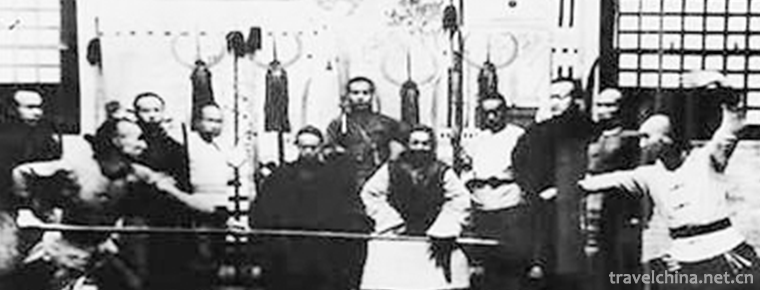
-
Raohe Street Night Market
Raohe Street Night Market is located in Raohe Street.
Views: 498 Time 2018-10-12 -
Shanghai Metropolitan Vegetable Garden
Shanghai Metropolitan Vegetable Garden is located on the Bank of Hangzhou Bay, Bay Town, Fengxian District. It is about 50 kilometers away from the center of Shanghai.
Views: 304 Time 2018-12-19 -
Hushan Great Wall
Hushan Great Wall is situated on the Yalu River, 15 kilometers east of Dandong City. It is an important scenic spot in the national Yalu River scenic spot. It is across the river from Korea's Yuchidao.
Views: 123 Time 2019-01-16 -
Sintering Techniques of Chengcheng Yaotou Ceramics
Yaotou Ceramic Firing Skill in Chengcheng, a traditional handicraft in Yaotou Town, Chengcheng County, east of Guanzhong, Shaanxi Province, is one of the national intangible cultural heritages..
Views: 188 Time 2019-04-18 -
Percussion music
Percussion is one of the traditional Chinese instrumental music. Music played by two kinds of musical instruments, i.e. playing and playing, is commonly known as Gong and drum or drum music in Chinese.
Views: 178 Time 2019-04-22 -
Legend of Liu Ruan
The legend of Liu Ruan, also known as the story of Liu Ruan's encounter with immortals, is spread in Shangxian (now Xinchang, Shengzhou) and Tiantai. It is a mythological love story that takes Liu Rua.
Views: 388 Time 2019-05-13 -
Wood movable type printing technology
Dongyuan Village is located in the southwest of Ruian City, Zhejiang Province. According to the local "Wang's genealogy of Taiyuan County", in the early Yuan Dynasty, Wang Famao, a hermit in.
Views: 113 Time 2019-06-06 -
Poop love song
In February 2006, a cultural census unexpectedly found "Poya Ge Shu" in Poya Village. Through expert research, 81 patterns in "Poya Ge Shu" have the character of words, and are one.
Views: 212 Time 2019-06-09 -
Ancient plank road of Mingyue Gorge
Mingyuexia ancient plank road is located at the mouth of Jialing River Valley, Chaotian District, Guangyuan City. It is the starting point of national Jianmen Shu Road scenic tourism line, and is a provincial key cultural relics protection unit..
Views: 393 Time 2020-11-08 -
The announcer Ding Zhen will not be on duty until half a year later
On December 6, just after yesterday's live media broadcast, Ding Zhen met with more than 20 fans from all over the country to take photos at noon. Ding Zhen is no longer as shy and helpless as he was when he first met a stranger. After half a month's popularity,.
Views: 114 Time 2020-12-06 -
Famous people in Mianyang
Wenqi, Emperor chengdi of Han Dynasty, Guangwu people, Ziqi, Zhenyuan General of the Eastern Han Dynasty..
Views: 329 Time 2020-12-14 -
Meishan mineral resources
There are 25 kinds of minerals in Meishan, mainly including coal, natural gas, iron, copper, lead, zinc, manganese, placer gold, glauberite, gypsum, bentonite, phosphorus, dolomite, cement limestone, magnesite, granite for facing, vein quartz, crystal, quartz sandstone,.
Views: 261 Time 2020-12-18
